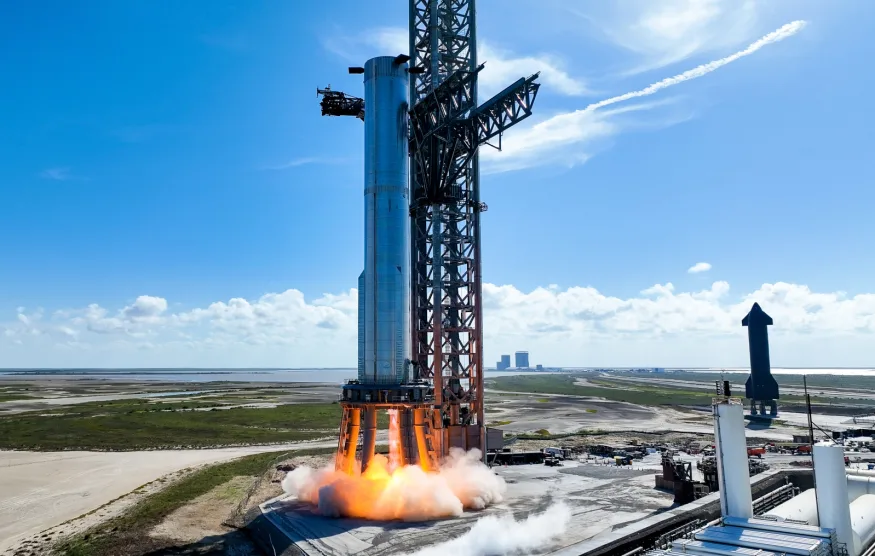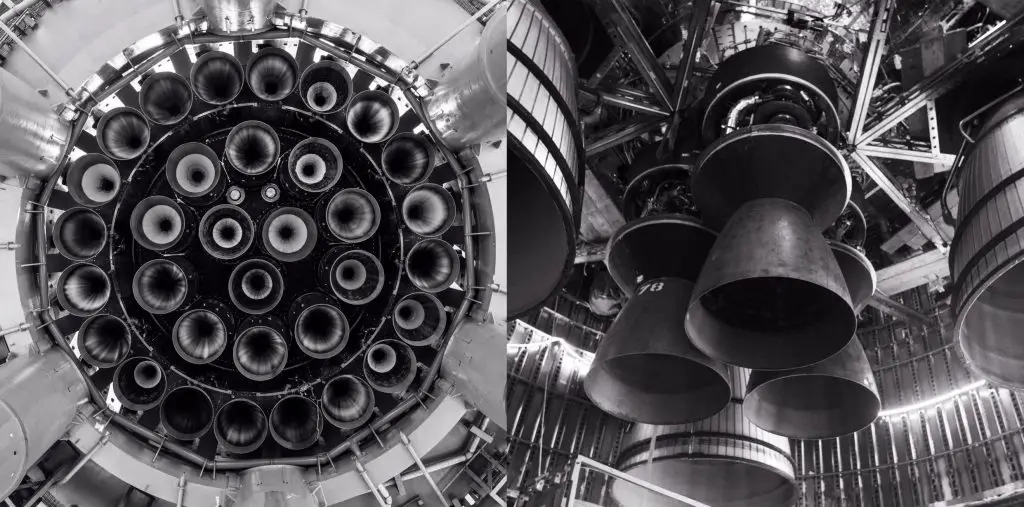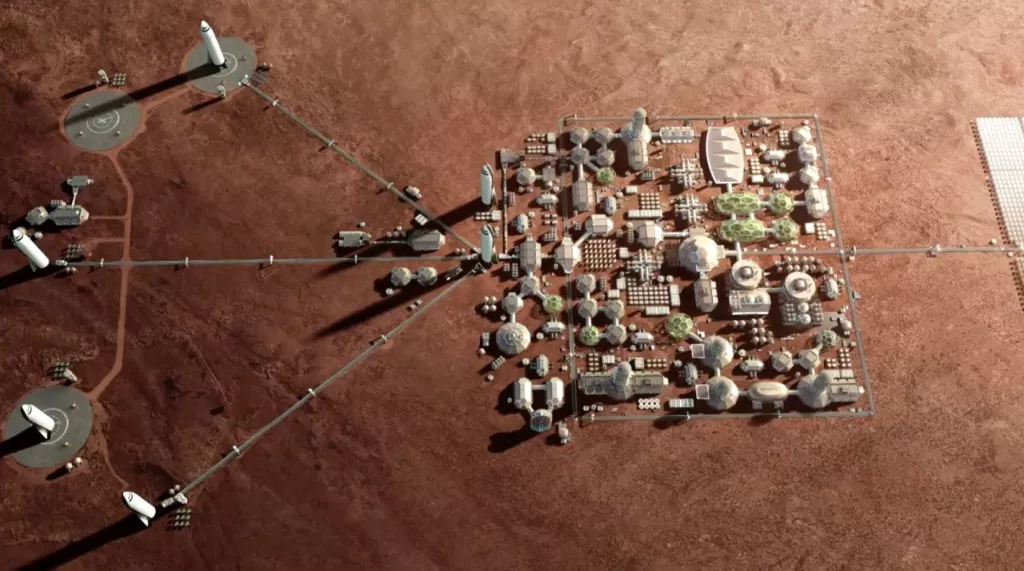
If you are an active social media user then it’s highly unlikely that you do not know about Starship. Spacex has developed a new spacecraft which can carry people and cargo to the moon, Mars and beyond. The Starship is the world’s largest rocket and is a product of years of research and development efforts by Spacex. The Starship has a unique design and its innovative technical abilities makes it an engineering marvel which could potentially change the future of space exploration. In this article, we explore the vision behind the Starship, its technical specifications and capabilities, its importance in space exploration and commercial space travel.
The Vision Behind Spacex Starship
Elon Musk’s vision for Starship is nothing short of revolutionary. He aims to make humans a space-faring civilization, establishing a permanent and self-sufficient human presence on other planets. The idea is to create a multi-planetary species that can thrive even if Earth is no longer habitable due to some catastrophic event.

But it is not just about human survival. Musk also believes that the colonization of other planets will accelerate scientific discoveries and innovations that could benefit Earth. He envisions a future where humans can travel sustainably and inexpensively between planets.
Elon Musk’s Ambitious Goals
We all know that Elon Musk wants to make life sustainable on Mars. This can be possible by establishing a city on Mars, but the very first thing we need is to be able to travel till Mars. The Starship is the first step towards achieving these goals. It is a spacecraft which is fully reusable, allowing it to make multiple trips to space and back without needing significant repairs or replacements.

But why Mars? Musk believes that Mars is the most habitable planet in our solar system after Earth. It has a similar day/night cycle. Its thin atmosphere can be terraformed. Mars also has abundant resources that could sustain human life. In addition, Mars is hiding wealth of scientific mysteries that we can learn from. Studying the red planet could help us understand our origins, the history of our solar system, and the possibility of life beyond Earth.
The Evolution of Spacex’s Spacecraft Designs
Spacex has come a long way since its inception. The company started with the Falcon 1 rocket, which was designed to carry small payloads into orbit. Over time, Spacex developed the Falcon 9 and Falcon Heavy rockets, which can carry larger payloads and even humans to the International Space Station.
However, Musk wanted a spacecraft that could go beyond Earth’s orbit, including Mars and the Moon. This led to the development of the Starship. The Starship is a massive spacecraft, it can carry up to 100 people and cargo to other planets. It is powered by Spacex’s Raptor engines, which use methane and liquid oxygen as fuel. This makes the Starship more sustainable and cost-effective than traditional spacecraft, which rely on non-renewable resources.
Technical Specifications and Capabilities
Starship’s unique design and technical specifications make it a significant breakthrough in space exploration. Some of the most notable features of Starship include:
- Stainless-steel construction: It makes the spacecraft durable, reusable, and lower cost than other spacecraft.
- Retro-propulsion and aerodynamic control: Starship can control its descent and make pinpoint landings on unprepared surfaces such as the Moon or Mars.
- Hopper design: Starship’s unique design with a nose cone, fins, and landing legs make it capable of in-orbit refueling and landing on different surfaces.
- Life-support system: The spacecraft can support a crew of up to 100 people in extreme environments without the need for additional infrastructure.
Starship Parts
The Starship has mainly two parts. Part 1 is its booster also known as super heavy. Part 2 is the starship itself. Both these parts are completely reusable. When Starship is stacked on the super Heavy, the total height of the starship is about 120 meters. It is almost the size of a 40 storey building.

When Starship will be functional it is similar to a 40 storey skyscraper going to space and coming back to earth and landing with a pinpoint accuracy. Achieving this is a remarkable step for space exploration.
So far Spacex has tested both the parts individually. And they were successful in landing both these parts perfectly.
Launch System
The Super Heavy booster is a massive first-stage rocket. The integration of Starship with Super Heavy allows for unprecedented payload capacity. The Super Heavy booster itself is also fully reusable, enabling SpaceX to significantly reduce the cost of accessing space. The complete reusability of the launch system marks a significant milestone in space exploration, making it more accessible and economically viable.
Propulsion System: The Raptor Engine
The heart of Starship’s propulsion system lies in its Raptor engines. These engines, fueled by liquid methane, provide exceptional thrust capabilities, making Starship a highly efficient spacecraft. The use of methane as fuel brings several advantages, including easier storage, production from local resources on other planets, and reduced environmental impact compared to traditional rocket fuels. This forward-thinking approach highlights Spacex’s commitment to sustainability and long-term space exploration.

Payload Capacity and Potential Applications
Starship’s payload capacity is an essential aspect of its design. It can carry payloads of up to 100 tons to low Earth orbit and up to 21 tons to Mars. This capacity makes it ideal for various applications, including:
- Transporting humans and equipment to the Moon, Mars, and beyond.
- Deploying satellites and conducting scientific experiments in space.
- Commercial space flights, such as space tourism and orbital space hotels.
With its unique design features, powerful Raptor engine, and impressive payload capacity, Starship is a significant breakthrough in space exploration technology.
The Role of Starship in Space Exploration
Starship’s incredible design features and capabilities make it a crucial component of deep space exploration missions. Here are a few of its potential roles:
Lunar Missions and Establishing a Moon Base
Starship was first designed to support NASA’s Artemis program, a mission to bring humans back to the moon by 2024. The spacecraft’s design enables it to land in different environments, including the moon’s poles where there are potentially vast amounts of ice.
Ice could be a vital resource for life support and fuel, enabling sustainable visits to the Moon. The Starship’s ability to transport heavy payloads and equipment can be useful to establish a permanent base on the Moon.
The Moon’s unique environment will be useful to test new technologies for future missions to Mars and beyond. For example, the reduced gravity on the Moon can be useful to test new propulsion systems or to develop new mining techniques for extracting resources from other planets.
Mars Colonization: A New Frontier
Among the most ambitious goals of the Starship is Mars colonization. Mars has been identified as one of the most habitable places in our solar system, with ample resources that could support sustainable life. Musk’s plan is to send multiple Starships carrying thousands of people to establish a city on Mars.
However, Mars colonization poses significant challenges, including the harsh environment, the lack of a magnetic field, and the need for a self-sustaining ecosystem. The Starship’s design could help overcome some of these challenges by providing a reusable and reliable transportation system to and from Mars.

Furthermore, the Starship’s cargo capacity can be useful to transport the necessary equipment and supplies to establish a self-sustaining colony on Mars. This could include everything from food and water to building materials and scientific equipment.
Deep Space Exploration and Beyond
Starship’s long-term application involves venturing further into space and exploring other planets in our solar system. It could potentially be a mechanism for visiting other star systems, especially through crewed or un-crewed unmanned missions.
One potential use for the Starship is to explore the gas giants in our solar system, such as Jupiter and Saturn. These planets have many moons, some of which may have liquid water and potentially even life. The Starship’s versatility and adaptability will be useful to explore these moons and gather valuable scientific data.
Another possible use for the Starship is to explore asteroids and comets. These objects could provide valuable insights into the early history of our solar system and potentially even the origins of life on Earth. The Starship’s ability to land on different surfaces will help to collect samples from these objects and bring them back to Earth for analysis.
Starship’s Impact on Commercial Space Travel
Starship’s design and capabilities could revolutionize the commercial space travel industry. Here are a few examples of its potential impact:
The Future of Space Tourism
Starship could make space tourism a possibility for millions of people worldwide, offering a unique and life-changing experience. It could enable people to spend extended periods in a zero-gravity environment, witnessing Earth from a completely new perspective.
Satellite Deployment and Maintenance
Starship’s payload capacity could potentially enable the launch of multiple satellites simultaneously, dramatically reducing the cost of space missions. The spacecraft’s capability to launch and repair satellites in orbit could also revolutionize satellite maintenance, improving their longevity and reducing the need for scheduled replacements.
International Collaboration and Competition
Starship could facilitate international collaboration in the field of space exploration. Governments and private companies worldwide could pool resources and talents to achieve a common goal, making space exploration more efficient and streamlined. It could also lead to increased competition among countries and companies, spurring innovative and groundbreaking technological advances that could benefit the world.
Conclusion
Exploring the possibilities of Starship is an exciting prospect for those of us who are passionate about space exploration. The spacecraft’s design and capabilities offer new and exciting opportunities for not only space exploration but also commercial space travel. We have seen that Starship could potentially be used for lunar missions, establishing a moon base, colonizing Mars, deep space exploration, and space tourism.
As Elon Musk and his team continue to refine the spacecraft further and make it a reality, we expect revolutionary changes in the way we explore space and the way humans interact with it. The possibilities are endless, and we can’t wait to see what the future holds.
Learn more about telescopes and astrophotography.





